Until recently, most Americans equated the end of a successful career
with the beginning of retirement. No more. Now they want to stay in the
game (or better, change the game). They want to leave a mark. Make a
difference—and continue to make money. From Encore.org, the leading
organization in the field, comes a road map to every step of the encore
career journey. Here’s how to plan the transition. How much you need to
make. The pros and cons of going back to school. When to volunteer, and
when to intern. How to network effectively and harness the power of
social media. Who’s hiring and for what jobs? (Check out the Encore Hot
List of 35 viable careers). A comprehensive, nuts-and-bolts guide,
filled with inspiring stories and answering—in extensive FAQ
sections—the concerns of its readers, this book is everything you need
to help you strike a balance between doing good and doing well--in a way
that will sustain you through this new stage of life.
Flying in the face of our quick-fix culture, the New York Times bestselling Younger Next Year and its sequel, Younger Next Year for Women, crossed the 1,000,000-copy milestone by essentially telling readers to work out six days a week. Forever. This same honest, no shortcuts approach is woven into the DNA of Thinner This Year.
Chris Crowley, the memorable patient and coauthor of Younger Next Year, partners with Jen Sacheck, a nutritionist and exercise physiologist from Tufts University, and in lively, alternating chapters they spell out a weight-loss plan that will have readers lose up to 25 pounds in the first six months—and keep it off for life. The message is straightforward and based on the most up-to-date nutritional science: Avoid “dead,” i.e., nutrient-poor, foods, particularly the SOFAS (solid fats, added sugars) choices that comprise more than a third of our diet. Design your plate to be 50% vegetables and fruits, 25% whole grains, and 25% lean proteins. Skip the supplements. Never drink your calories. And exercise.
Exercise, the authors emphasize, is the great flywheel of weight loss. And whereas Younger Next Year told you why to exercise six days a week—Thinner This Year tells you how to eat and how to exercise, from the best aerobic workouts to a lifetime supply of 25 whole-body strength exercises—the “Sacred 25”—that will build muscle, protect joints, and add mobility. Exercise will do more than anything else to put off 70% of “normal” aging until the very end and eliminate 50% of serious illness and injury.
Since the advent of sport, athletes have worked to gain an edge on their competition—to look, feel, and perform their best—through both training and nutrition. Today, science is increasingly showing the negative impact that gluten, a protein in wheat, barley, and rye, can have on health.
For the estimated 30 million Americans with forms of gluten intolerance, such as celiac disease, this all-too-common protein can cause gastrointestinal trouble, inflammation, muscle fatigue, and mental fog that hinder an active lifestyle and negatively impact athletic performance. The solution: a whole-foods, nutrient-dense gluten-free diet.
Others who voluntarily eat gluten-free can also discover an edge they never knew was missing: faster recovery, reduced inflammation, improved digestion, and increased athletic performance.
The Gluten-Free Edge is the first comprehensive resource that includes:
• What gluten is and how it negatively impacts health and athletic performance
• The myriad benefits of adopting a gluten-free nutrition plan
• What to eat during training, competition, and recovery
• How to deal with group meals, eating on the road, and getting “glutened”
• Insights from prominent athletes already living the gluten-free edge
• And 50 simple, high-octane recipes to fuel your performance
Whether you’ve been diagnosed with gluten intolerance or simply want to get ahead of the competition, this book is for you. Your own gluten-free edge is waiting.
Who does not want to be healthier? Now in paperback: the book that Andrew Weil calls “offbeat, informative, and fun . . . a great read,” and that has been praised as “a delightful dance through science” (New York Times bestselling author Mark Hyman, M.D.) and as a “remarkable and insightful book [that] offers you the chance to achieve the best health of your life” (Mark Liponis, M.D., Medical Director, Canyon Ranch).
Written by bestselling author Gene Stone, The Secrets of People Who Never Get Sick arose from his desire to discover what might actually prevent him from getting sick himself. This book, the result of that exploration, tells the stories of twenty-five people who each possess a different secret of excellent health—a secret that makes sense and that Stone discovered has a true scientific underpinning. There are food secrets—why to take garlic and vitamin C, eat more probiotics, become a vegan, drink a tonic of brewer’s yeast. Exercise secrets—the benefits of lifting weights, the power of stretching. Environmental secrets—living in a Blue Zone, understanding the value of germs. Emotional secrets—seek out and stay in touch with friends, cultivate your spirituality. Physical secrets—nap more, take cold showers in the morning. And the wisdom that goes back generations: Yes, chicken soup works.
The stories make it personal, the research makes it real, and the do-it-yourself information shows how to integrate each secret into your own life, and become the next person who never gets sick.
Want to keep Alzheimer’s at bay for years—ideally, forever? Prevention is the way, and this is the guide. Now in paperback and updated throughout, The Alzheimer’s Prevention Program is essential for everyone with a family history of Alzheimer’s, and for the 80 million baby boomers who worry whenever they forget someone’s name. It’s the book that shows how to strengthen memory and avoid everyday lapses. How to incorporate the top ten brain-protecting foods into your diet. How to cross-train your brain, exercising both the right and left hemisphere. And how to reduce stress, a risk factor for developing dementia and Alzheimer’s, through meditation and 11 other relaxation strategies.
Written by the New York Times bestselling authors of The Memory Bible, this book is an easy-to-follow regimen based on the latest comprehensive research into Alzheimer’s disease, and especially the critical connection between lifestyle and susceptibility. The paperback edition is updated with a brand-new section that answers the most compelling questions asked of Dr. Small after publication of the first edition, including: the power of exercise to offset a genetic predisposition; antibodies that can clear Alzheimer’s plaques from the brain; and promising new treatments, from drugs to deep brain stimulation.
It’s the science-based, breakthrough program that will bring mental clarity to every day and help you take control of your brain’s health.
This is not a book for Bill Gates. Or Hillary Clinton, or Steven Spielberg. Clearly they have no trouble getting stuff done. For the great majority of us, though, what a comfort to discover that we’re not wastrels and slackers, but doers . . . in our own way. It may sound counterintuitive, but according to philosopher John Perry, you can accomplish a lot by putting things off. He calls it “structured procrastination”:
In 1995, while not working on some project I should have been working on, I began to feel rotten about myself. But then I noticed something. On the whole, I had a reputation as a person who got a lot done and made a reasonable contribution. . . . A paradox. Rather than getting to work on my important projects, I began to think about this conundrum. I realized that
I was what I call a structured procrastinator: a person who gets a lot done by not doing other things.
Celebrating a nearly universal character flaw, The Art of Procrastination is a wise, charming, compulsively readable book—really, a tongue-in-cheek argument of ideas. Perry offers ingenious strategies, like the defensive to-do list (“1. Learn Chinese . . .”) and task triage. He discusses the double-edged relationship between the computer and procrastination—on the one hand, it allows the procrastinator to fire off a letter or paper at the last possible minute; on the other, it’s a dangerous time suck (Perry counters this by never surfing until he’s already hungry for lunch). Or what may be procrastination’s greatest gift: the chance to accomplish surprising, wonderful things by not sticking to a rigid schedule. For example, Perry wrote this book by avoiding the work he was supposed to be doing—grading papers and evaluating dissertation ideas. How lucky for us.
Flying in the face of our quick-fix culture, the New York Times bestselling Younger Next Year and its sequel, Younger Next Year for Women, crossed the 1,000,000-copy milestone by essentially telling readers to work out six days a week. Forever. This same honest, no shortcuts approach is woven into the DNA of Thinner This Year.
Chris Crowley, the memorable patient and coauthor of Younger Next Year, partners with Jen Sacheck, a nutritionist and exercise physiologist from Tufts University, and in lively, alternating chapters they spell out a weight-loss plan that will have readers lose up to 25 pounds in the first six months—and keep it off for life. The message is straightforward and based on the most up-to-date nutritional science: Avoid “dead,” i.e., nutrient-poor, foods, particularly the SOFAS (solid fats, added sugars) choices that comprise more than a third of our diet. Design your plate to be 50% vegetables and fruits, 25% whole grains, and 25% lean proteins. Skip the supplements. Never drink your calories. And exercise.
Exercise, the authors emphasize, is the great flywheel of weight loss. And whereas Younger Next Year told you why to exercise six days a week—Thinner This Year tells you how to eat and how to exercise, from the best aerobic workouts to a lifetime supply of 25 whole-body strength exercises—the “Sacred 25”—that will build muscle, protect joints, and add mobility. Exercise will do more than anything else to put off 70% of “normal” aging until the very end and eliminate 50% of serious illness and injury.
Since the advent of sport, athletes have worked to gain an edge on their competition—to look, feel, and perform their best—through both training and nutrition. Today, science is increasingly showing the negative impact that gluten, a protein in wheat, barley, and rye, can have on health.
For the estimated 30 million Americans with forms of gluten intolerance, such as celiac disease, this all-too-common protein can cause gastrointestinal trouble, inflammation, muscle fatigue, and mental fog that hinder an active lifestyle and negatively impact athletic performance. The solution: a whole-foods, nutrient-dense gluten-free diet.
Others who voluntarily eat gluten-free can also discover an edge they never knew was missing: faster recovery, reduced inflammation, improved digestion, and increased athletic performance.
The Gluten-Free Edge is the first comprehensive resource that includes:
• What gluten is and how it negatively impacts health and athletic performance
• The myriad benefits of adopting a gluten-free nutrition plan
• What to eat during training, competition, and recovery
• How to deal with group meals, eating on the road, and getting “glutened”
• Insights from prominent athletes already living the gluten-free edge
• And 50 simple, high-octane recipes to fuel your performance
Whether you’ve been diagnosed with gluten intolerance or simply want to get ahead of the competition, this book is for you. Your own gluten-free edge is waiting.
Who does not want to be healthier? Now in paperback: the book that Andrew Weil calls “offbeat, informative, and fun . . . a great read,” and that has been praised as “a delightful dance through science” (New York Times bestselling author Mark Hyman, M.D.) and as a “remarkable and insightful book [that] offers you the chance to achieve the best health of your life” (Mark Liponis, M.D., Medical Director, Canyon Ranch).
Written by bestselling author Gene Stone, The Secrets of People Who Never Get Sick arose from his desire to discover what might actually prevent him from getting sick himself. This book, the result of that exploration, tells the stories of twenty-five people who each possess a different secret of excellent health—a secret that makes sense and that Stone discovered has a true scientific underpinning. There are food secrets—why to take garlic and vitamin C, eat more probiotics, become a vegan, drink a tonic of brewer’s yeast. Exercise secrets—the benefits of lifting weights, the power of stretching. Environmental secrets—living in a Blue Zone, understanding the value of germs. Emotional secrets—seek out and stay in touch with friends, cultivate your spirituality. Physical secrets—nap more, take cold showers in the morning. And the wisdom that goes back generations: Yes, chicken soup works.
The stories make it personal, the research makes it real, and the do-it-yourself information shows how to integrate each secret into your own life, and become the next person who never gets sick.
Want to keep Alzheimer’s at bay for years—ideally, forever? Prevention is the way, and this is the guide. Now in paperback and updated throughout, The Alzheimer’s Prevention Program is essential for everyone with a family history of Alzheimer’s, and for the 80 million baby boomers who worry whenever they forget someone’s name. It’s the book that shows how to strengthen memory and avoid everyday lapses. How to incorporate the top ten brain-protecting foods into your diet. How to cross-train your brain, exercising both the right and left hemisphere. And how to reduce stress, a risk factor for developing dementia and Alzheimer’s, through meditation and 11 other relaxation strategies.
Written by the New York Times bestselling authors of The Memory Bible, this book is an easy-to-follow regimen based on the latest comprehensive research into Alzheimer’s disease, and especially the critical connection between lifestyle and susceptibility. The paperback edition is updated with a brand-new section that answers the most compelling questions asked of Dr. Small after publication of the first edition, including: the power of exercise to offset a genetic predisposition; antibodies that can clear Alzheimer’s plaques from the brain; and promising new treatments, from drugs to deep brain stimulation.
It’s the science-based, breakthrough program that will bring mental clarity to every day and help you take control of your brain’s health.
This is not a book for Bill Gates. Or Hillary Clinton, or Steven Spielberg. Clearly they have no trouble getting stuff done. For the great majority of us, though, what a comfort to discover that we’re not wastrels and slackers, but doers . . . in our own way. It may sound counterintuitive, but according to philosopher John Perry, you can accomplish a lot by putting things off. He calls it “structured procrastination”:
In 1995, while not working on some project I should have been working on, I began to feel rotten about myself. But then I noticed something. On the whole, I had a reputation as a person who got a lot done and made a reasonable contribution. . . . A paradox. Rather than getting to work on my important projects, I began to think about this conundrum. I realized that
I was what I call a structured procrastinator: a person who gets a lot done by not doing other things.
Celebrating a nearly universal character flaw, The Art of Procrastination is a wise, charming, compulsively readable book—really, a tongue-in-cheek argument of ideas. Perry offers ingenious strategies, like the defensive to-do list (“1. Learn Chinese . . .”) and task triage. He discusses the double-edged relationship between the computer and procrastination—on the one hand, it allows the procrastinator to fire off a letter or paper at the last possible minute; on the other, it’s a dangerous time suck (Perry counters this by never surfing until he’s already hungry for lunch). Or what may be procrastination’s greatest gift: the chance to accomplish surprising, wonderful things by not sticking to a rigid schedule. For example, Perry wrote this book by avoiding the work he was supposed to be doing—grading papers and evaluating dissertation ideas. How lucky for us.
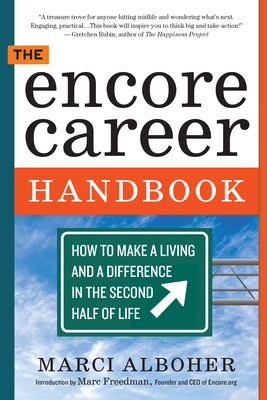
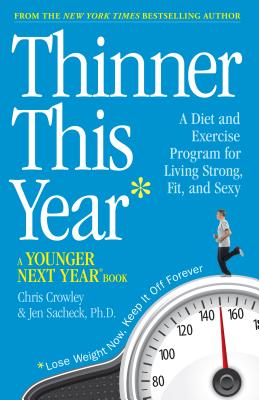
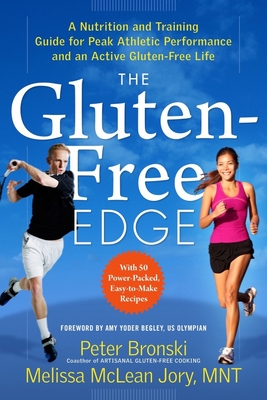
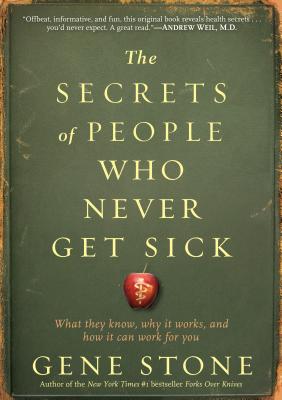
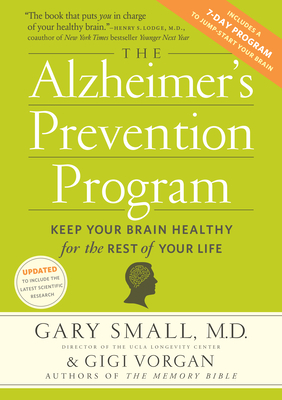

No comments:
Post a Comment